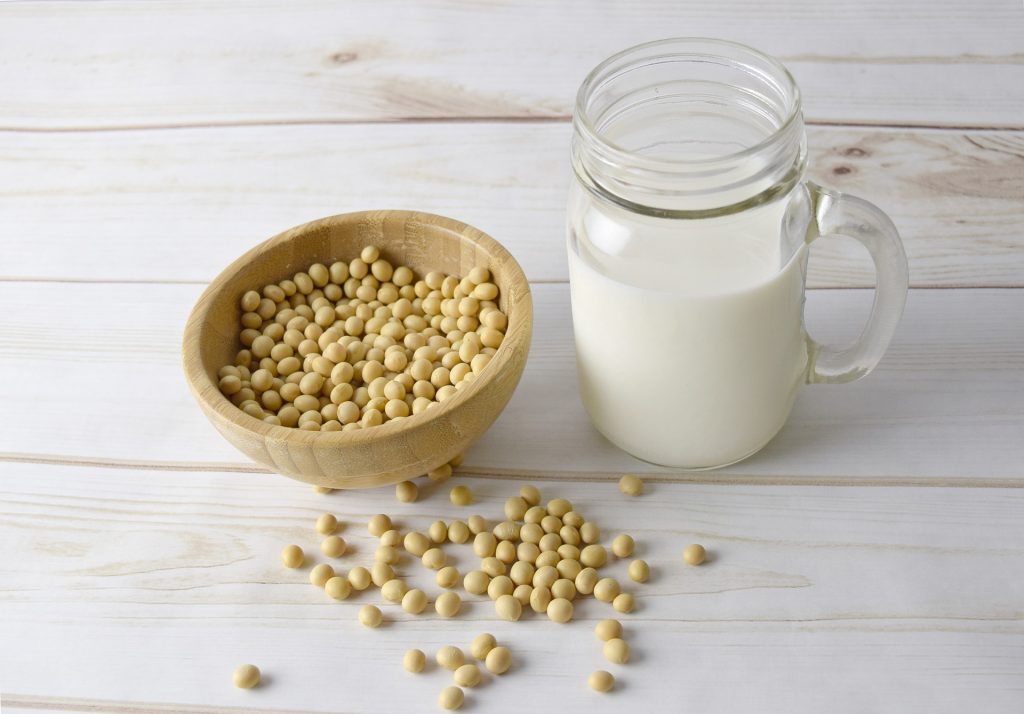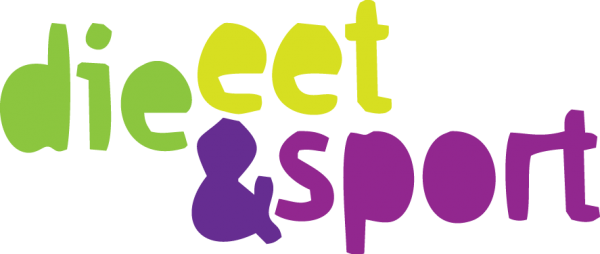The number of Dutch people who have started to eat less meat in recent years has increased in the last couple of years.1 The consumption of dairy products such as milk, yogurt, quark and cheese has also decreased: 11.9% less than in 2007-2010.2 This is partly due to the rise of dairy alternatives, such as soy drink, almond drink, rice drink, oat drink and coconut drink. Because almond drink, rice drink, oat drink and coconut drink do not contain enough protein4, these are not complete alternatives to regular dairy products. But what about soy drink? Is soy drink a healthy and complete alternative to regular milk products?

Nutritional value
There are many different regular dairy products. Low-fat and semi-skimmed milk products are part of a healthy diet, because, among other things, they reduce the risk of colon cancer and type 2 diabetes. In addition, dairy products are an important source of protein, vitamin B2, B12 and calcium.3 To make a good comparison between soy drink and regular milk products, the table on the next page lists the most commonly used milk products in The Netherlands, along with two types of soy drink: one without additives and one commonly used brand that is enriched with vitamin B2, B12, D and calcium.2 4
| Macro- and micronutrients | Semi-skimmed milk |
Buttermilk | Low-fat yogurt |
Soy drink | Alpro Sojadrink original (*enriched) |
|---|---|---|---|---|---|
| Energy (kcal) | 45 | 30 | 37 | 38 | 39 |
| Protein (g) | 3,4 | 3,0 | 4,1 | 3,4 | 3,0 |
| Fat (g) | 1,4 | 0,2 | 0,2 | 2,0 | 1,8 |
| – saturated fat (g) | 0,9 | 0,1 | 0,1 | 0,3 | 0,3 |
| Carboyhydrate (g) | 4,7 | 3,6 | 4,0 | 1,4 | 2,4 |
| – sugars (g) | 4,7 | 3,6 | 4,0 | 1,1 | 2,4 |
| Dietary fibre (g) | 0,0 | 0,0 | 0,0 | 0,5 | 0,5 |
| Vitamin B2 (mg) | 0,18 | 0,15 | 0,17 | 0,01 | 0,21* |
| Vitamin B12 (mcg) | 0,45 | 0,17 | 0,28 | 0,00 | 0,38* |
| Calcium (mg) | 123 | 109 | 152 | 12 | 120* |
As you can see in the table above, soy drink without additives is sufficient for macronutrients, but not for vitamins and minerals. Enriching soy drink with vitamins B2, B12 and calcium is therefore essential to make it a complete dairy substitute.
Health
There are many stories circulating about the use of soy and its adverse effects on our health: soy products are said to cause feminization in men and the fertility of men and women would be negatively affected. The most frequently mentioned effects on our health will therefore be briefly discussed below.
- Feminization in men
Soy contains isoflavones, plant hormones that fall under the group of phytoestrogens. Phytoestrogens resemble the human hormone estradiol and could theoretically disrupt the hormone balance of women and men.5 But what about the practice? For example, can phytoestrogens cause breast growth in men?
The Dutch Vegetarian Association mentions in their factsheet that 2 case studies have been published in the past that showed that soy caused feminization in men.5 In both studies soy consumption was very high: 12-14 servings per day, an above-average intake that you cannot achieve if you only replace your dairy and meat with soy drink and tofu.
And if you still have doubts … a very recent meta-analysis of 41 studies concludes: neither soy intake nor isoflavone intake affects male hormones.6
- Fertility
That the consumption of soy affects fertility is not a made up myth. It is mainly animal studies from the past that show a negative effect of soy consumption on reproduction in rats and sheep.7 8 However, this is not found in a recent review among humans.9
A number of studies have been found that saw a link between a high intake of soy products and reduced sperm quality.10 However, the methodology of these studies can be criticized.
With a normal intake of soy, you don’t have to worry about the adverse effects on fertility. Factors such as age, obesity, excessive alcohol consumption and smoking have a much more significant effect on fertility in both men and women.11
- Cardiovascular disease
Soybeans are legumes. In the Richtlijnen goede voeding 2015, the Gezondheidsraad reports that it has been convincingly demonstrated that the consumption of legumes lowers LDL cholesterol, which is a causal risk factor for cardiovascular disease.12 For that reason, the advice is to eat legumes every week. Soy drink is not explicitly mentioned.
Conclusion
Soy drink is indeed a good alternative to regular milk products. Soy drink is a complete replacement, provided the product is enriched with vitamin B2, B12 and calcium. And it is a healthy product, despite many myths that are circulating about it. A normal consumption of 300-450 ml soy drink per day can be part of a healthy diet.
However, we have not yet highlighted one aspect. What about the sustainability of soy products? Is soy drink also a sustainable alternative to regular milk products? We will come back to this in next fable or fact.
1 Nederlandse Vegetariërsbond (2020). Factsheet Consumptiecijfers en aantallen vegetariërs. Geraadpleegd van https://www.vegetariers.nl/serverspecific/default/images/File/Factsheet1Consumptiecijfersenaantallenvegetariersv3.3juni2020.pdf
2 RIVM (2020). Eet en drinkt Nederland volgens de Richtlijnen Schijf van Vijf? Resultaten van de voedselconsumptiepeiling 2012-2016. Geraadpleegd van https://www.rivm.nl/bibliotheek/rapporten/2020-0082.pdf
3 Voedingscentrum (2021). Melk en melkproducten. Geraadpleegd van https://www.voedingscentrum.nl/encyclopedie/melk-en-melkproducten.aspx
4 RIVM (2019). NEVO-online versie 2019/6.0. Geraadpleegd van https://nevo-online.rivm.nl/Default.aspx
5 Nederlandse Vegetariërsbond (2019). Factsheet Soja. Geraadpleegd van https://www.vegetariers.nl/serverspecific/default/images/File/Factsheet9Soja.pdf
6 Reed KE, Camargo J, Hamilton-Reeves J, Kurzer M, Messina M. (2021). Neither soy nor isoflavone intake affects male reproductive hormones: An expanded and updated meta-analysis of clinical studies. Reproductive Toxicology, 100, 60-67.
7 Bennetts HW, Underwood EJ, Shier FL. (1946). A specific breeding problem of sheep on subterranean clover pastures in Western Australia. Austral Journal of Veterinary Sciences, 22, 2–12.
8 Seppen J. (2012). A diet containing the soy phytoestrogen genistein causes infertility in female rats partially deficient in UDP glucuronyltransferase. Toxicology and Applied Pharmacology, 264, 335–342.
9 Gaskins Audrey AJ, Chavarro JE. (2018). Diet and Fertility: A Review. American Journal of Obstetrics and Gynecology, 218 (4), 379–389.
10 Salas-Huetos A, Bulló M, Salas-Salvadó J. (2017). Dietary patterns, foods and nutrients in male fertility parameters and fecundability: a systematic review of observational studies. Human Reproduction Update, 23 (4), 371-389.
11 Nederlandse Vereniging voor Obstetrie en Gynaecologie (2021). Leefstijl en zwanger worden. Geraadpleegd van https://www.degynaecoloog.nl/onderwerpen/leefstijl-en-zwanger-worden/
12 Gezondheidsraad (2015). Richtlijnen goede voeding 2015. Geraadpleegd van https://www.gezondheidsraad.nl/documenten/adviezen/2015/11/04/richtlijnen-goede-voeding-2015
